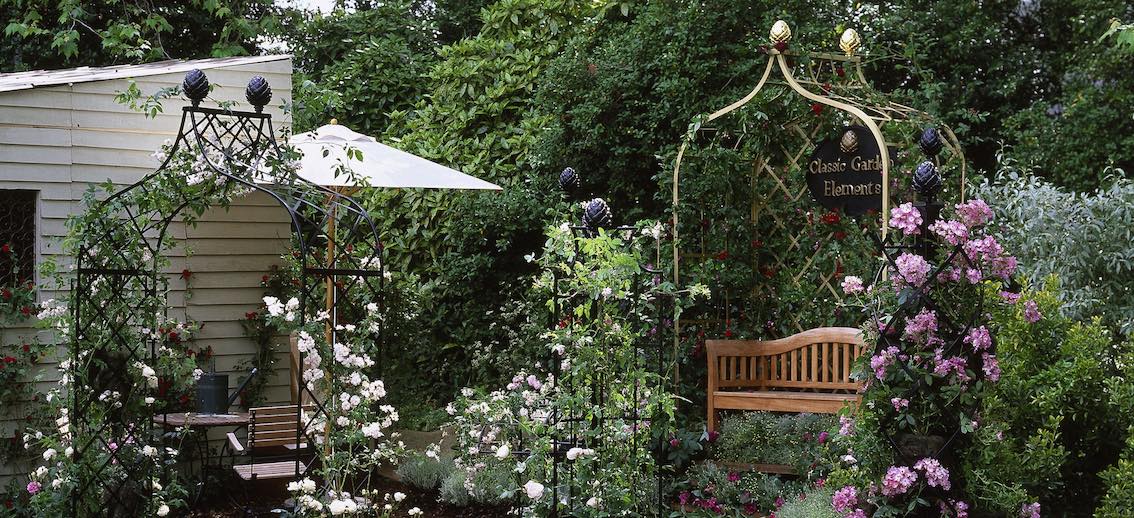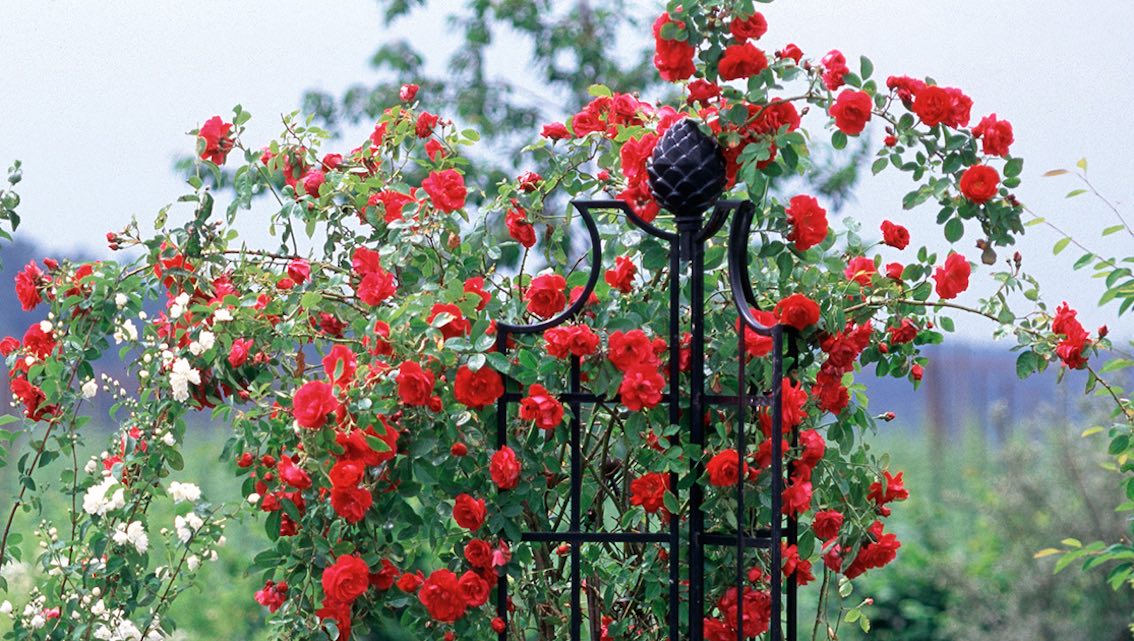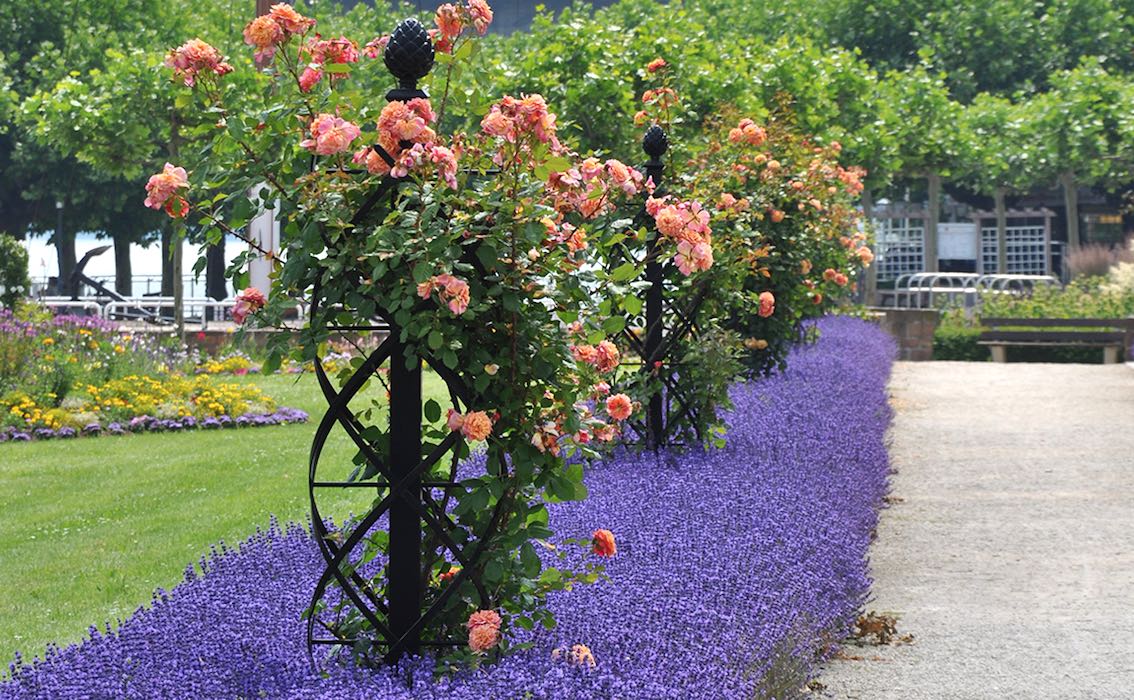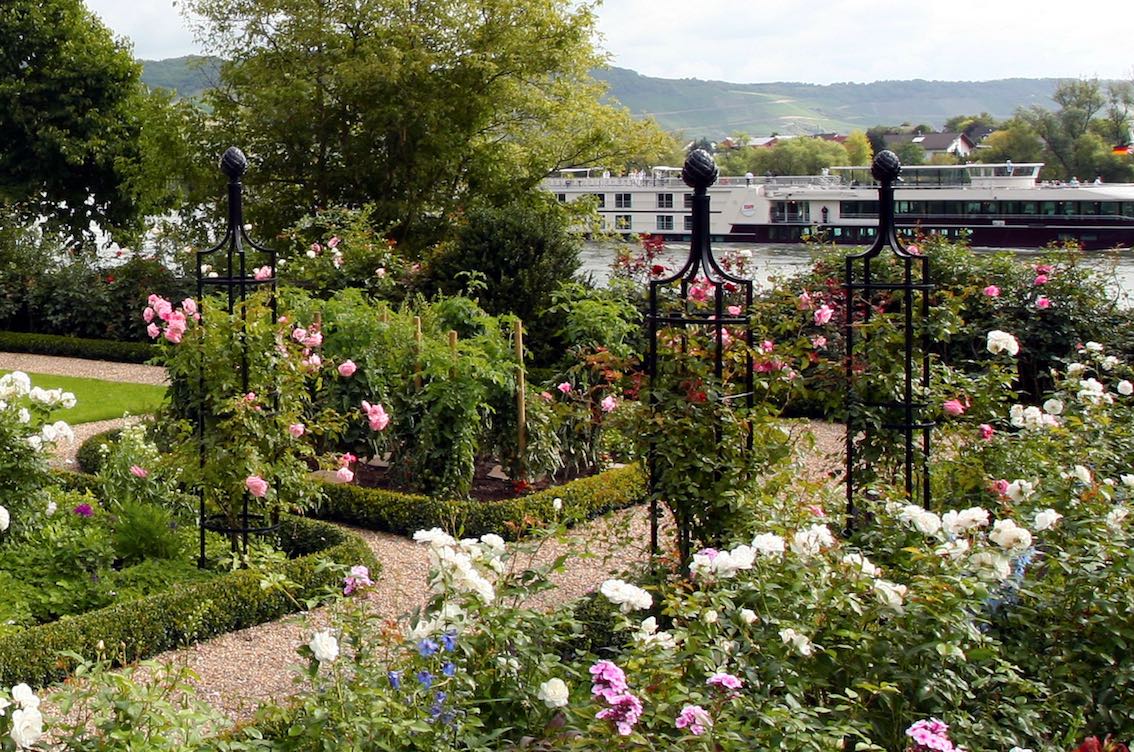How can rose supports help?
Rambling and climbing roses thrive in the wild only with some form of support. Ramblers tend to grow up trees, while climbing roses often cover up other shrubs. If you try this in your garden, however, sooner or later these natural supports (perhaps an old apple tree for the rambler, or your neighbour’s taxus for the climbing rose) will be choked to death by the rose. For this reason, it is crucial to provide a strong and durable structure, such as a trellis, pergola, or arch, to guide and support the growth of these roses. These supports not only prevent damage to surrounding plants but also enhance the visual appeal of your garden by creating defined spaces for the roses to flourish. Many of the most attractive new varieties, especially David Austin’s English Roses, tend to have large and heavy blooms that will hang downwards or even break off unless given support. Proper pruning and training can help distribute the weight of the blooms more evenly and ensure that the plant maintains a balanced shape.
In addition, the number of blooms which a rose will have depends to a large degree on how it is tied and grown. The maximum number of blooms can only be achieved if the rose is made to grow horizontally, at a slight angle, along an appropriate support. This technique encourages the formation of flowering side shoots, significantly increasing the overall display. Varieties such as the standard or weeping standard rose, which are not found in nature, require special support from the very beginning. Stakes or custom-made metal frames are often essential to keep their growth upright and stable. Regular monitoring is also important to ensure that ties are not too tight, as this can damage the stems and restrict growth. By carefully selecting and maintaining the right support structures, you can extend the life of your roses and enjoy a spectacular display season after season.






